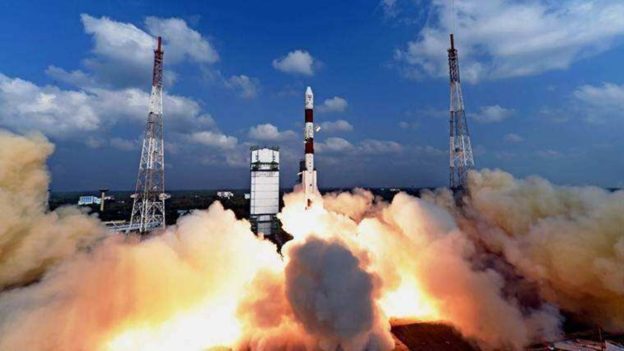During the forthcoming visit of Prime Minister Narendra Modi to the US later this month, space cooperation and critical technologies under ‘initiative on critical and emerging technology’ (iCET) umbrella are topping the agenda.
The space sector holds immense potential for scientific exploration, technological advancement, and economic growth. Recognizing this, India and the United States have embarked on a collaborative journey to leverage their respective strengths and forge partnerships in the realm of space exploration and research. During the forthcoming visit of Prime Minister Narendra Modi to the US later this month, space cooperation and critical technologies under ‘initiative on critical and emerging technology’ (iCET) umbrella are topping the agenda.
The US space agency NASA and Indian Space Research Organisation (ISRO) have already announced that the Indian astronauts will further train at Johnson Space Center. However there is no clarity on when the training will start and what the ““advanced training” would entail.
These astronauts who were shortlisted from the Indian Air Force (IAF) have already undergone extensive training at the Star City Cosmonaut training center, Russia in 2020. This training was part of Gaganyaan Human Spaceflight Programme of ISRO which also includes development of a crewed spacecraft that would launch on a version of ISRO’s GSLV Mark 3 project.
The NASA-ISRO Synthetic Aperture Radar (NISAR) Earth science mission is one of the biggest programmes where India and the US are working together. NISAR features a jointly-developed SAR payload that will be integrated onto an Indian-built satellite and launched by India in 2024. Later this year according to the White House, NASA Administrator Bill Nelson will travel to India.
Both NASA and ISRO are expected to cooperate on the American space agency’s Commercial Lunar Payload Services (CLPS) programme. In this programme NASA purchases flights of research payloads on commercial lunar landers. Both agencies are expected to call a meeting of companies that have CLPS contracts with Indian companies later this year or early next year.
It has been reported last month that for strengthening partnership between the two countries in new areas like Artificial Intelligence & Space, the first US-India Advanced Domains Defense Dialogue (AD3) met in New Delhi. The officials of both countries had discussed areas of convergence, opportunities for further cooperation and the unique challenges in these domains.
Earlier this year the two countries had agreed to advance space cooperation in many areas under the iCET umbrella and this includes human space exploration and commercial space partnership. India and the US have taken significant strides in advancing the private space sector. In 2022, the US had kicked off its Artemis programme when it launched the Orion spacecraft in November towards the moon and then bringing it back. And as has been reported earlier India is getting ready to launch its first human spaceflight mission (Gaganyaan) next year. It is in this context a collaboration with the US, an advanced spacefaring nation, will help India to secure expertise and technologies.
Both India and the US can cooperate in different areas in the space sector including satellite technology, space research, human spaceflight, and commercial space endeavors.
Satellite Technology and Earth Observation:
India and the US can collaborate in satellite technology, including joint development and sharing of resources. By combining India’s expertise in cost-effective satellite manufacturing and the US’s advanced capabilities in Earth observation systems, both countries can enhance their ability to monitor climate change, natural disasters, and agricultural patterns. Such cooperation can lead to the development of high-resolution imaging satellites, data-sharing mechanisms, and joint research projects, benefiting both nations and the global community.
Space Research and Exploration:
India’s Indian Space Research Organisation (ISRO) and NASA have already fostered partnerships in space research, including the Mars Orbiter Mission and joint satellite missions. Strengthening these collaborations, India and the US can jointly explore other celestial bodies, such as the Moon and Mars. Sharing scientific knowledge, data, and research findings can accelerate space exploration and contribute to humanity’s understanding of the universe. Additionally, collaboration in deep space exploration missions, such as asteroid studies and space telescopes, can lead to groundbreaking discoveries and advancements in space science.
Human Spaceflight:
The US has a rich history of human spaceflight, with NASA at the forefront of manned missions. India, on the other hand, has made significant strides in space technology and has expressed its intent to send humans to space. Collaboration between the two countries in human spaceflight endeavors can be mutually beneficial. Sharing expertise, training resources, and technological know-how can expedite India’s progress in this area, while the United States can benefit from India’s cost-effective approach and innovative solutions. Jointly developing crewed missions and establishing training programs can pave the way for future space exploration milestones.
Commercial Space Endeavors:
The commercial space sector has witnessed rapid growth and is poised to become a significant contributor to the global economy. Both the countries can collaborate in this domain by fostering partnerships between their respective space agencies and private space companies. Joint investments, knowledge exchange, and market access can fuel innovation and competitiveness in the commercial space sector. Collaboration can encompass satellite launches, space tourism, small satellite development, and the utilization of space resources, creating new avenues for economic growth and job creation in both countries.
https://www.financialexpress.com/business/defence-india-and-the-us-a-path-of-collaboration-in-the-space-sector-3119683/





